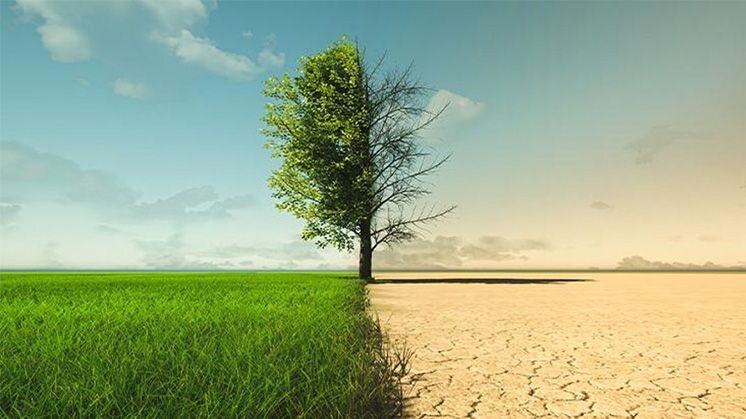Importance of social resilience, responsibility against climate change
Climate change, global warming, seasonal transitions, and intense drought in the world have not only destroyed the environment but have also made people’s lives more difficult.

Every year, October 24 is commemorated as the International Day against Climate Change by the UN.
It highlights the significance of raising awareness of climate change threats, taking actions to address its adverse effects, as well as boosting community resilience to climate change.
Climate change is a long-term atmospheric-oceanic phenomenon on a global scale, which is affected by factors such as solar as well as human activities.
It has caused long-term fluctuations on the planet affecting various regions.
Changes in seasonal patterns, wildfires, drought occurrence, and a global surge in diseases are just a few examples of climate change consequences.
Human-induced climate change is the biggest and most pervasive threat to the natural environment and societies that the world has ever experienced, and the poorest countries are paying the highest price.
In Iran, like other parts of the world, climate change has impacted parameters like precipitation, temperature, wind, amount of snowfall, and runoff. Over the past decades, the number of weather-related extreme events and weather hazards has increased drastically, like torrential rains hitting the country during unusual times, ISNA reported.
In recent years, the issue of climate change, global warming, and the loss of comfort in cities has been ignored by governments and mayors.
According to the World Meteorological Organization (WMO) report on the State of the Climate in Asia, enumerating climate hazards and severe weather events in Iran in 2023, extreme events such as floods, drought, dust storms, and strong winds that affected the country.
According to the report, below-normal rainfall in most regions of Iran for the third consecutive year in 2023 has led to widespread drought in the country.
The eastern half experienced severe rainfall shortage within the year. Decreased rain and severe drought in the region along with above-normal temperatures have resulted in the drying up of the main inland lakebed, the Hamoun Lake.
In Iran, autumn 2023 was much warmer than normal with severe shortages of rainfall throughout the country.
Severe dust storms hit most parts of Asia. In mid-September, a dust storm affected Iran, Afghanistan, and Pakistan causing serious health problems.
High winds in the southeast of the country from September 18 to 25, caused severe dust storms resulting in severe injuries and hospitalization.
Levar wind along with the dust from dried Hamoun wetland affected the region, causing adverse health effects, closure of schools, transportation hazards, and damage to crops.
The flood that struck Astara city from September 17 to 19 significantly affected 300 households. The flood resulted from intense and prolonged rainfall in Astara on September 18. Within a span of 12 hours, 220 mm of rain was recorded causing profound damage.
The Paris Climate Agreement is one of the most important international agreements on climate change, highlighting the need for joint action to maintain the global temperature rise below 2 degrees Celsius compared to the pre-industrial revolution by reducing greenhouse gas emissions.
In the Iranian calendar year 1395 (2016-2017), Iran agreed to the Paris agreement. Nevertheless, it has not been implemented in the country, yet.
Conference of the Parties (COP) is one of the many conferences held globally on climate change. The 2024 UN Climate Change Conference (UNFCCC COP 29) will convene in November in Baku, Azerbaijan.
This event will include the 29th session of the Conference of the Parties (COP 29), the 19th meeting of the COP serving as the Meeting of the Parties to the Kyoto Protocol (CMP 19), and the sixth meeting of the COP serving as the Meeting of the Parties to the Paris Agreement (CMA 6) that will convene to complete the first enhanced transparency framework and the new collective quantified goal on finance, among other matters.
The COP is the supreme decision-making body of the Convention. All States that are Parties to the Convention are represented at the COP. A key task for the COP is to review the reports submitted by Parties on their greenhouse gas emissions and climate action.

Write your comment.